Our composition features the paradigmatic text of the Gospel according to Matthew (chapter 25) which evokes the works of mercy that every Christian should accomplish in order to gain his salvation. Only the seven bodily works of mercy are mentioned here. Although the subject is obviously religious, Frans Francken the Younger, as he usually does, offers us a demonstration of his talent for constructing animated scenes using the isocephaly technique. Thus, crowds occupy the space and enliven the scene in the different planes. The harmonious integration of the figures on the different planes responds to the play of the drapes of the fabrics giving an impression of undulation of the groups. The basic tones are ocher-beige and gray-blue and the figures are illuminated by diffused light. The costumes made in a wide palette of bright colors cover the flesh of the protagonists which vary from milky complexion to more amber complexions. Clothing and skin tones are made up of fine superimposed glazes. Like a freeze frame, the characters are captured in motion, sometimes in force, often graceful.
Our painting is an invitation to discover the universe, both precise and sensitive, of Frans Francken the Younger in the years 1610/20.
Provenance: Belgian private collection.
Dimensions: 51 x 79.5 cm
Related works, different versions on the same theme listed in the monograph of Frans II Francken by Ursula Harting (1983):
270: Frans II signed and dated 1615 - 52 x 80.5 cm oil on wood panel. Köller sale 1979 (ill. P.307 fig. 270)
271: very close, composition reversed. Signed dated 1617. 99 x 148 cm oil on wood panel. Basel Museum of Fine Arts n ° inv 1142 (ill. P. 308 fig. 271)
272: Similar to the composition 271. Signed 49.3 x 86.8 cm oil on wood panel. City Art Gallery Manchester n ° inv 1912 (ill. P. 308 fig. 272)
Frans II Francken or Frans Francken the Younger (Antwerp 1581 - Id. 1641). Son of Frans I and brother of Hieronymus II and Ambrosius II, he is the most famous of the Francken dynasty. Excellent in the most diverse genres, he specializes in small and medium format painting (also known as cabinet painting) and that Rubens called the "cose piccole". He painted numerous biblical, mythological and historical scenes in which he depicted compact crowds according to the rule of isocephaly. Pushing the glazing technique to perfection, he achieves a delicacy of nuances and fluidity effects which give all their interest to the background figures. The greatest Flemish artists call on his talent, we thus find the virtuoso groups of Francken in the landscapes of Abraham Govaerts, Joos de Momper or Jan Brueghel I and II, in the architectures of Bartholomeus van Bassen, Pieter Neeffs I or even Hendrick van Steenwijck to name a few.
The works of mercy, partially present in the Old Testament, are especially developed in the Gospel according to Matthew in his parable of the Day of Judgment. They are the main charitable actions that every Christian should perform out of love for his neighbor in order to alleviate “his pain”. The accomplishment of these works is likely to repair the faults committed and to ensure his salvation. Thus, every Christian is encouraged to perform these works (or acts) of mercy by following the way of Christ to alleviate the misery of men. They are actually 14 in number, divided into two groups: the seven spiritual works and the seven bodily works. These are based precisely on the word of Jesus taken from the Gospel of Matthew. The Church lists the different physical works of mercy:
1- giving food to the hungry
2- giving drink to those who are thirsty
3- clothe those who are naked
4- welcome pilgrims
5- assist the sick
6- visit the prisoners
7- bury the dead



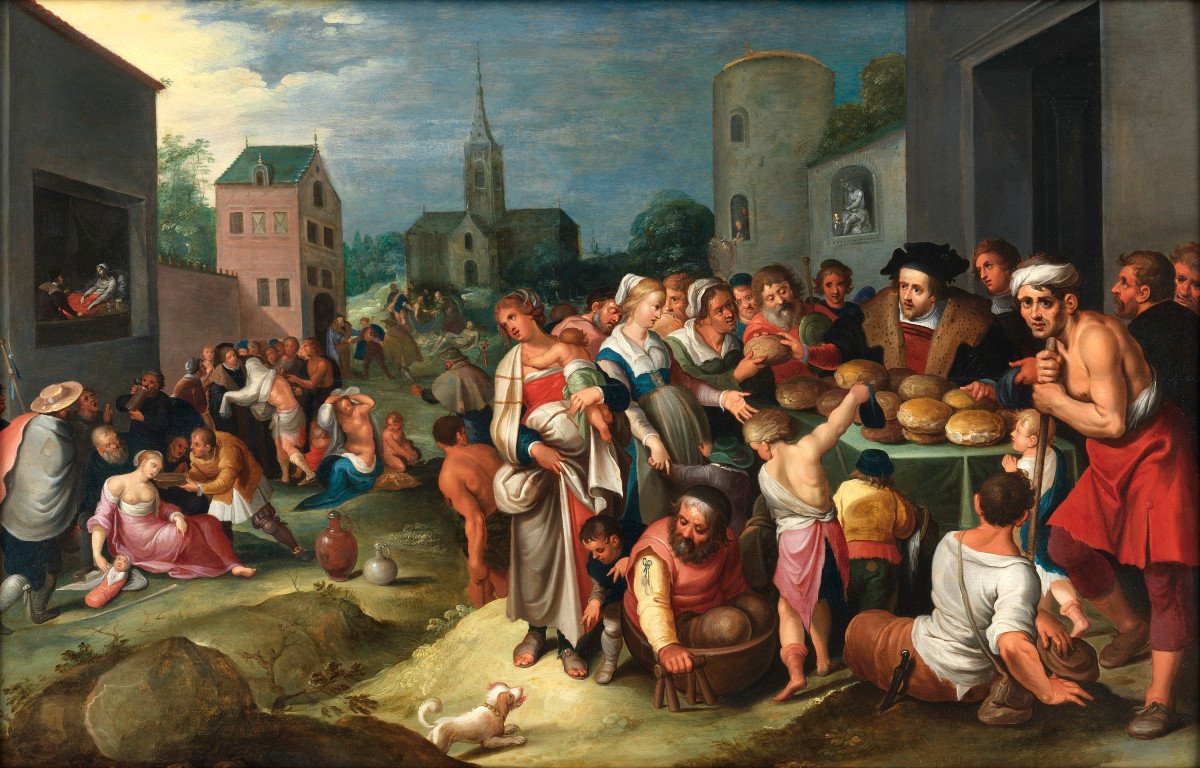



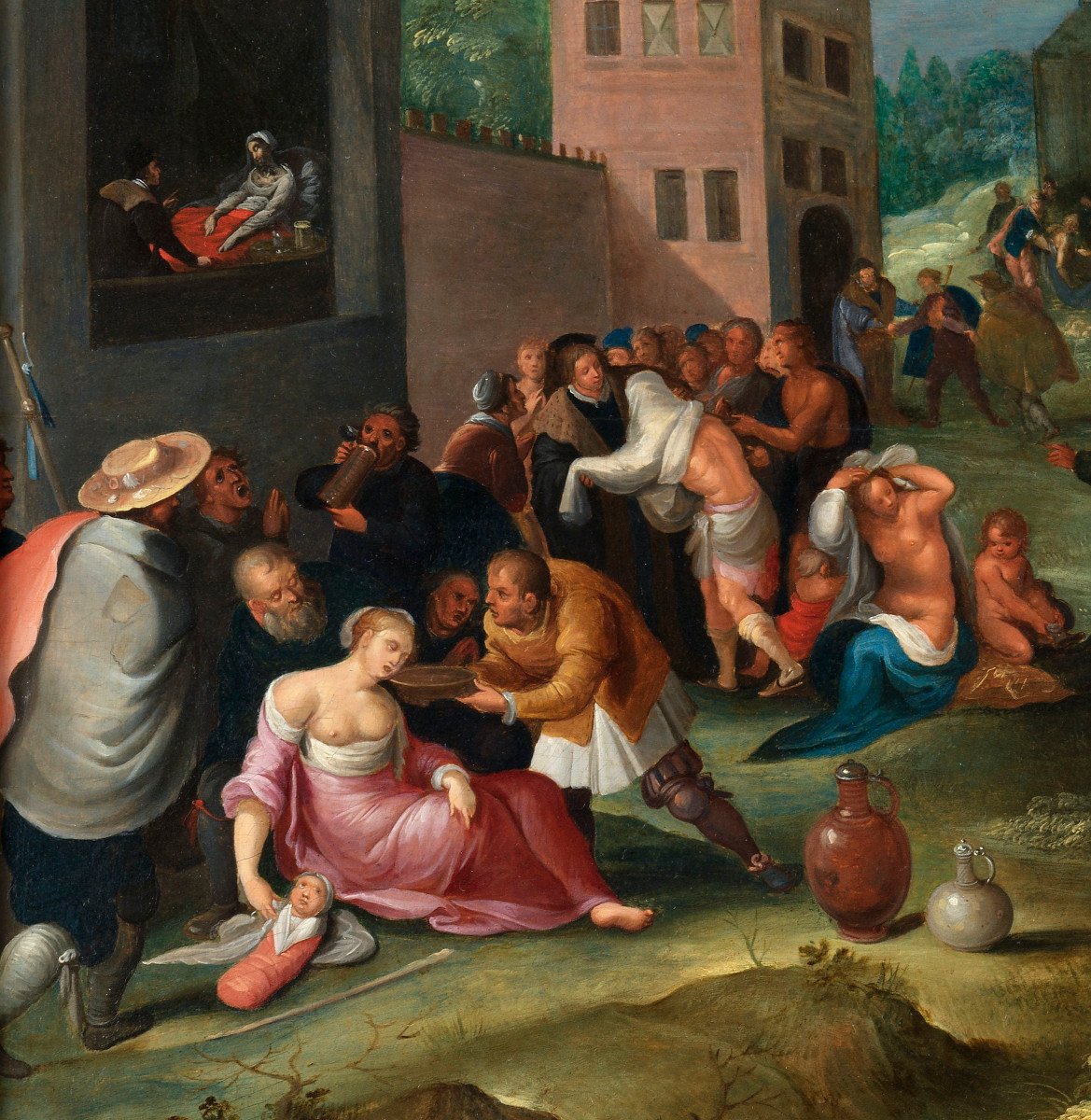



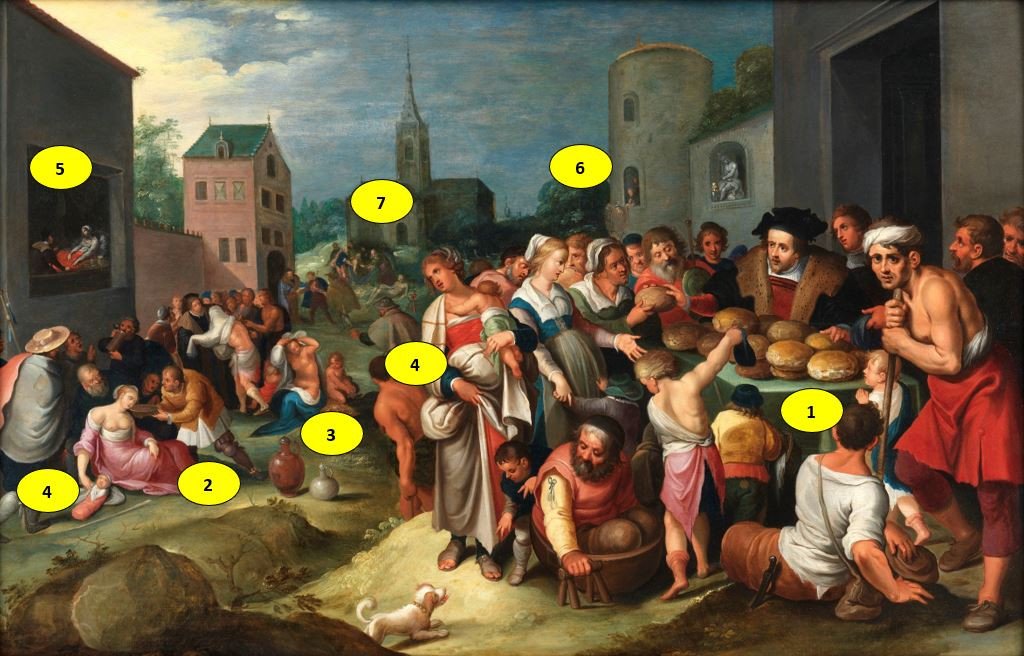


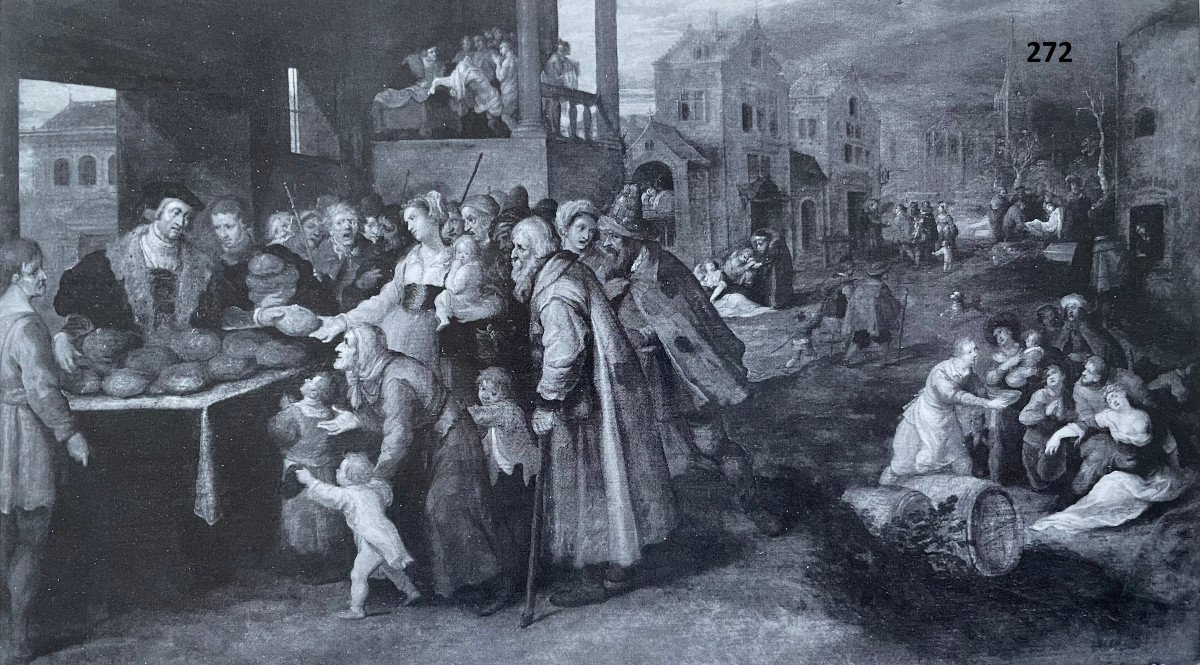


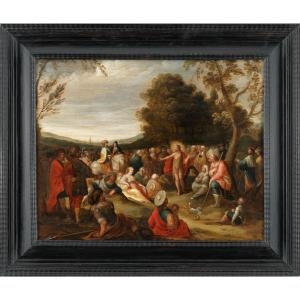













 Le Magazine de PROANTIC
Le Magazine de PROANTIC TRÉSORS Magazine
TRÉSORS Magazine Rivista Artiquariato
Rivista Artiquariato
